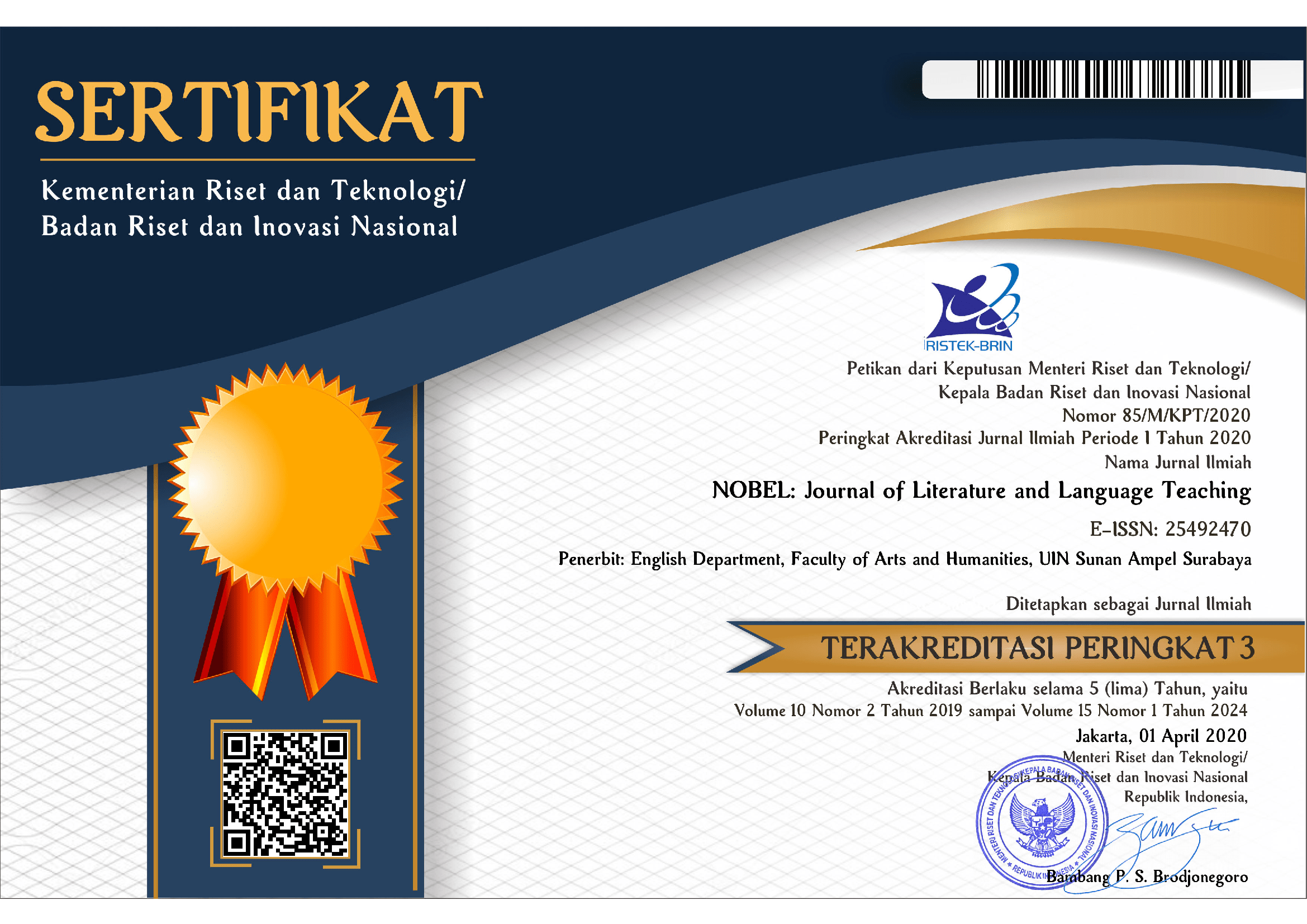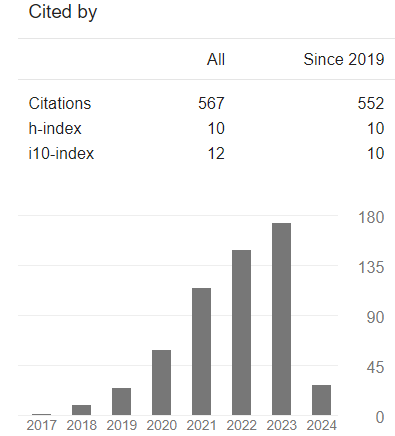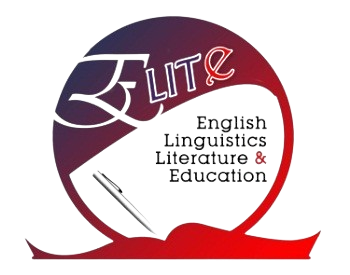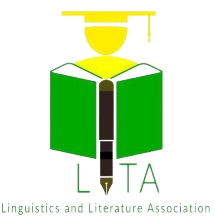Codemixing in an Entertainment TV Show: How "Which Is" Functions in Indonesians' Repertoire
DOI:
https://doi.org/10.15642/NOBEL.2019.10.1.32-51Keywords:
codemixing, which is, functionAbstract
The present article portrays the use of "which is" as a currently popular mixed-code among Indonesians, especially teenagers and public figures, since the 2010s or popularly named as the language of South-Jakartans (Bahasa Anak Jaksel) by taking an Indonesian TV show as the data collection sites. The data were the comments of one of the judges of Indonesian Idol 2018, pseudonymized as ME. For investigation purpose, videos containing the "which is" phrase uttered by ME were sorted, transcribed, and analyzed. The analysis focused on how "which is" functions in the utterances. It was found that "which is" used by Indonesians likely functions as substituting conjunctions and discourse markers. The substituting conjunctions include cause-effect and coordinating conjunctions, as for the discourse markers function to minimize face-threatening act.
Downloads
References
Brannen, M. Y., & Thomas, D. C. (2010). Bicultural individuals in cross cultural management - implications and opportunity. International Journal of Cross Cultural Management. https://doi.org/10.1177/1470595809359580
Chairat, P. (2014). English code-mixing and code-switching in Thai songs. NIDA Journal of Language and Communication, 19(22), 1–29. https://doi.org/10.1016/S0146-6453(12)00004-8
Chee, L. K. (2010). Yang mana sebagai kata hubung: Analisis linguistik korpus. 297–320.
Dumanig, F. P., Lumayag, L., & David, M. K. (2015). Code switching in mixed couples’ interaction: A conversation analysis. Protagonist International Journal of Management And Technology ( PIJMT ), 2(1), 1–10.
Gardner-Chloros, P. (2009). Code-switching. Cambridge: Cambridge University Press.
Gumperz, J. J. (1982). Discourse Strategies. Cambridge: Cambridge University Press.
Hoffmann, C. (2014). Introduction to Bilingualism. New York: Routledge.
Holmes, J. (2008). An Introduction to Sociolinguistics. Harlow, England: Pearson Longman.
Janney, R. W. (2017). The whole truth and nothing but the truth: Linguistic avoidance in the O . J . Simpson transcripts. In W. Falkner & H. J. Schmid (Eds.), Words, lexemes, concepts – approaches to the lexicon. Studies in honour of Leonhard Lipka. London: ARNDT, Horst.
Karim, N.S., Onn, F.M., Musa, H.H., and Mahmood, A.H. (2008). Tatabahasa Dewan. Edisi Ketiga. Kuala Lumpur: Dewan Bahasa dan Pustaka.
Kasoema, A. R., & Amri, Z. (2016). Code mixing used by radiobroadcaster of Pesona FM on radio program of song request. E-Journal of English Language & Literature, 5(1).
Kia, L. S., & Yee, T. K. (2011). Code-mixing of English in the entertainment news of Chinese newspapers in Malaysia.International Journal of English Linguistics, 1(1), 3–14.
Kramsch, C. (2003). In search of the intercultural. Journal of Sociolinguistics. 6 (2), 275-282. https://doi.org/10.1111/1467-9481.00188
Leung, C. H., & Chan, Y. (2016). Sociolinguistic phenomenon of code mixing in Hong Kong : From a perspective of marketing communications. Humanities & Social Sciences Reviews, 4(1), 20–26. https://doi.org/10.18510/hssr.2016.413
Luciana, L. (2006). Code-switching in Indonesian radio and television programs: Linguistic and sociolinguistic perspectives. Asian Englishes, 9(1), 4–23. https://doi.org/10.1080/13488678.2006.10801174
McLaughlin, B. (1984). Child psychology. Second-language acquisition in childhood: Preschool children (2nd ed.). Hillsdale, NJ, US: Lawrence Erlbaum Associates, Inc.
Mulyajati, E. (2018). The Indonesian-English code-mixing in Just Alvin show at Metro tv. Journal of English Language and Culture, 7(2), 57–63. https://doi.org/10.30813/jelc.v7i2.1024
Mushtaq, H., & Zahra, T. (2012). An analysis of code-mixing in television commercials. Language In India, 12(February), 565–577.
Myers-Scotton, C. (1992). Comparing codeswitching and borrowing. Journal of Multilingual and Multicultural Development, 13(1–2), 19–39. https://doi.org/10.1080/01434632.1992.9994481
Pfaff, C. W. (1979). Constraints on language mixing: Intrasentential code-switching and borrowing in Spanish/English. Language, 55(2), 291. https://doi.org/10.2307/412586
Poplack, S. (1980). Sometimes I’ll start a sentence in Englishy termino en español : Toward a typology of code-switching 1. Linguistics, 18, 581–618. https://doi.org/10.1515/ling.1980.18.7-8.581
Pradina, F. A., Soeriasoemantri, Y., &Heriyanto. (2013). Code-switching as the positive politeness strategies in Indonesian 4 th grade students ’ conversation. Research on Humanities and Social Sciences, 3(22), 19–25.
Ramlan, M. (1983). Ilmu Bahasa Indonesia: Sintaksis. Yogyakarta: UB Karyono.
Rohardiyanto, I. (2017). The occurrence of code mixing in Indonesian girl magazine kawanku. Buana Gender, 2(1). https://doi.org/10.22515/bg.v2i1.802
Sundusiah, S. (2014). Perbandingan klausa inti dan klausa sematan bahasa Indonesia dan bahasa inggris. Retrieved 7 March 2019 from http://file.upi.edu/Direktori/FPBS/JUR._PEND._BHS._DAN_SASTRA_INDONESIA/SUCI_SUNDUSIAH/artikel_ilmiah/perbandingan_klausa_Indo-Inggris.pdf.
Tabors, P. O. (2008). One child, two languages: A guide for preschool educators of children learning English as a second language. Baltimore: MD: Paul H. Brookes Publishing Co.
Trudgil, P. (1971). The Social Differentiation of English in Norwich. Cambridge: Cambridge University Press.
Wardhaugh, R. (2006). An Introduction to Sociolinguistics. Oxford: Blackwell Publishing.
Widiatmoko, B. (2015). Pemakaian di mana dan yang mana sebagai kata hubung dalam kalimat bahasa Indonesia. Jurnal Pujangga, 1(22), 65–74.
Wijana, I. D. P. (2006). Pemakaian kata di mana dalam tulisan mahasiswa. Humaniora, 18(3), 254–262.
Downloads
Published
How to Cite
Issue
Section
License
Copyright (c) 2019 NOBEL: Journal of Literature and Language Teaching

This work is licensed under a Creative Commons Attribution 4.0 International License.







